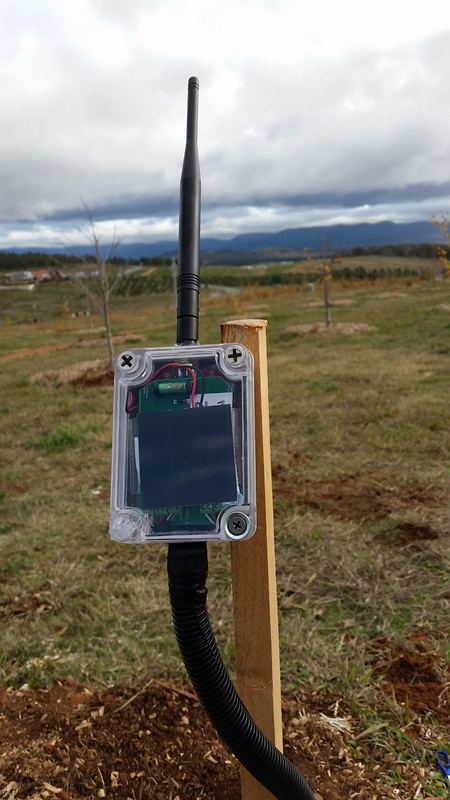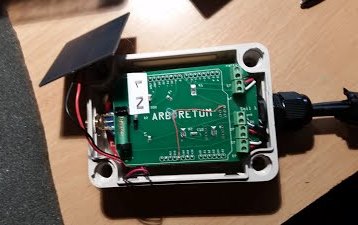Marcus Butler
30 September 2016: A state of the art Internet of Things (IoT) technology developed by a University of Canberra research team will help monitor soil conditions and assist in the management of the forests at the National Arboretum Canberra.
A group of researchers, led by University of Canberra assistant professor of network engineering Kumudu Munasinghe and research associate Adrian Garrido Sanchis, designed and installed an IoT network with wireless sensor nodes to monitor conditions at the growing Arboretum.
This high-tech IoT network will eventually replace a manual task of testing and recording soil condition across 104 forests of native and exotic trees spanning over 250 hectares. Wireless sensor data include temperature and volumetric water content (i.e. soil moisture) of the soil that is networked to an online database with real-time updates.
Dr Munasinghe and his team also developed advanced analytics from the sensor data to deliver important environmental knowledge of forests over time as well.
“We worked with the Arboretum staff to understand what they need to know and we built an innovative system to deliver what they needed and we’re already seeing great results from day one” he said.
Dr Munasinghe says the sensor nodes are internetworked using an advanced wireless mesh networking backbone that connects to the Internet to allow the Arboretum staff to access the information from mobile devices anytime and anywhere via the cloud.
“Since the information that is gathered is hosted by the cloud, it is accessible via any device while staff are among the trees themselves or an off-site location.
“Before the first nodes were installed among the Chinese Tulip Trees (Forest 9), that location was just one stop on a month-long route for a staff member around the Arboretum to test all of these conditions and when the loop was finished it was time to start again,” Dr Munasinghe said.
“Now that same data is collected, analysed and updated four times a day, providing the forest managers with critical soil condition information to ensure the trees grow and develop in the most ideal circumstances.”
The data generated from the Arboretum could be used for many purposes besides the management of the trees, Dr Munasinghe said.
“The information, which is at the fingertips of the Arboretum staff, could be used for better event planning or to help staff guide visitors to avoid areas affected after heavy rain.”
Mr Scott Saddler, Manager, National Arboretum Canberra said the first installation has been a talking point for many visitors.
“These nodes stand-out in the middle of one of the first forests which guests pass on their way into the Arboretum. We do get quite a few questions about the computer-tree,” Mr Saddler said.
“Knowing that the information is coming straight from the forest to our staff and we can make well-informed decisions around watering and other care that we might need to take, is really critical to ‘growing’ a world-renowned institution.
“The Arboretum is already considering a further expansion of this bespoke IoT technology across the other 103 forests at the Arboretum and we’re excited to be connected to the land, the trees and the environment here in new ways.”
Mr Saddler said the mesh network will assist the National Arboretum in its commitment to generate research and new knowledge about its rare, endangered and symbolic trees; the forests and their ecology.
It will aid horticulture staff in monitoring and researching how the trees grow and how they can be affected by the seasons, weather, soil, water, nutrition, aspect, pests and diseases.





